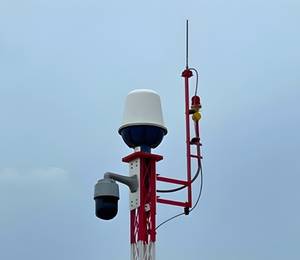In a joint statement with HM Treasury, the Bank of England has unveiled plans to support businesses hit by the lockdown. Although the magnitude of the economic shock from the Covid-19 coronavirus is highly uncertain, the Bank of England and HM Treasury warned that activity is likely to weaken in the coming months. Temporary, but significant, disruptions to supply chains and weaker activity could challenge cash flows and increase demand for working capital from companies.
Yet while the lockdown will have economically destructive effects, a new report from the World Economic Forum (WEF) has predicted the coronavirus pandemic could fuel the tech-enabled contact-free economy. According to the Covid-19 risks outlook: A preliminary mapping and its implications report, areas of growth include telemedicine, online retail, and social distancing delivery and logistics, which promise to boost employment in certain areas and sectors.
For instance, insurance, a sector that has traditionally been relatively slow at adopting new technologies, has seen a technology revolution during the lockdown. Mark Allan, CFO at insurance company Brit Insurance, said: “Covid-19 has had a lot of impact.”
He said the Lloyd's insurance market has progressed rapidly in the past two to three months., and the lockdown has forced changes onto the insurance sector that would normally have taken many years. The technology changes that have been put in place would have normally taken five years to roll out, but now, people can work and trade from home.
From a CIO and CISO perspective, the report noted that pressure to find new ways to cope with unexpected challenges has spurred breakthroughs and accelerated pre-existing trends in the applications of digital technology.
Analyst Gartner recently noted that the coronavirus pandemic and effects of the global economic recession are causing CIOs to prioritise spending on technology and services that are deemed “mission-critical” over initiatives aimed at growth or transformation.
“Necessity has pushed aside hesitations about the adoption of some technological solutions. However, rapid roll-outs and dramatic surges in the use of technological solutions increase risks of infrastructure overload and breakdown, cyber crime, privacy violations and inequality,” the WEF report’s authors warned.
Economic Downturn
Although prolonged recession and economic downturn were top concerns among risk professionals who took part in a survey for the report, 37.6% of the 347 Forum members surveyed said cyber attacks and data fraud due to a sustained shift in working patterns was a significant world threat. However, when asked about threats to business, cyber crime was regarded as the third biggest threat to companies.
The WEF warned that the increase in working-from-home arrangements has expanded the use of potentially vulnerable services, such as virtual private networks (VPNs), that lack adequate safeguards, amplifying the threat to individuals and organisations.
In the report, the WEF warned: “The risk of disruption to critical information infrastructure is also enhanced by the vulnerability of services under strain from high demand, such as energy, financial services and healthcare. Meanwhile, a blurring of the line separating corporate and personal systems heightens the risk of exposing sensitive information not appropriately secured and monitored on personal devices.”
In the report, the WEF stated: “While technology is fundamental to overcoming this crisis, its applications raise risks and challenges, from its potential impact on society to the inadvertent 'hardwiring' of crisis management policies and the exposure of infrastructure vulnerabilities.” It urged decision makers to manage these risks. as it could lead to increased technology governance challenges.
Automation And Digitisation
According to the WEF, while the pandemic has increased remote work globally, additional protective health measures could make employers reluctant to bring back their entire workforce. It predicted that this could lead to greater use of automation in new processes, even in areas that would be more optimally delivered by automation complementing human workers.
The report suggests that employers may look to apply additional countermeasures, such as internal health surveillance applications and corporate messaging capabilities.
“Travel and work restrictions due to the lockdowns may cause companies and economies, especially those without access to a large pool of human resources or a cheap workforce, to re-evaluate their reliance on a human labour force, in the hope that automation offers improved resilience and security of supply for critical components,” the report’s authors wrote.
Recovery Agenda For CIOs
The economic downturn due to the pandemic has meant that IT spending will be 8% less than last year, according to Gartner. “CIOs have moved into emergency cost optimisation which means that investments will be minimised and prioritised on operations that keep the business running, which will be the top priority for most organisations through 2020,” said John-David Lovelock, distinguished research vice-president at Gartner.
“Recovery will not follow previous patterns as the forces behind this recession will create both supply side and demand side shocks as the public health, social and commercial restrictions begin to lessen.”
Given the WEF predictions and the challenges in maintaining social distancing in the confines of a typical office, CIOs may well be asked to deploy greater levels of AI and automation to replace people in processes that would have required people collaborating with automated systems.











